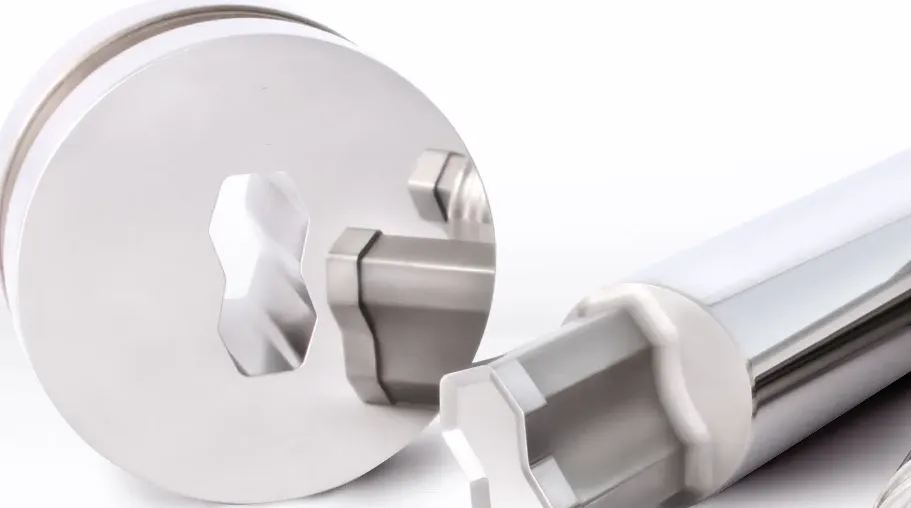Advancements in Tablet Compression Tooling: Revolutionizing Pharmaceutical Manufacturing
- Suase /
- SUASE NEWS
In the realm of pharmaceutical manufacturing, precision and efficiency are paramount. Among the many tools instrumental in this process, tablet compression tooling stands out as a linchpin in ensuring the production of high-quality tablets. Recent advancements in this field have not only enhanced the quality and consistency of tablet production but have also streamlined manufacturing processes, significantly impacting the pharmaceutical industry. Let's delve into the latest innovations and their implications.
The Evolution of Tablet Compression Tooling:
Traditionally, tablet compression tooling consisted of sets of dies and punches designed to compress powders into tablets of specific shapes and sizes. While this method proved effective, it was limited in terms of flexibility, precision, and speed. However, recent technological advancements have led to the development of sophisticated tablet compression tooling systems that offer unparalleled control and efficiency.
Key Technological Advancements:
- Advanced Materials: Modern tablet compression tooling utilizes high-quality materials such as hardened tool steel or carbide, ensuring durability and resistance to wear and corrosion. These materials are essential for maintaining the integrity of the tablet's shape and surface finish over prolonged use.
- Precision Engineering: Cutting-edge manufacturing techniques, including computer numerical control (CNC) machining and laser technology, enable the creation of intricate tooling designs with micron-level precision. This precision is crucial for producing tablets with uniform weight, thickness, and hardness, meeting stringent regulatory requirements.
- Innovative Coatings: Specialized coatings, such as diamond-like carbon (DLC) and ceramic, are applied to tablet compression tooling surfaces to minimize friction, prevent sticking, and prolong tool life. These coatings not only enhance tablet quality but also reduce maintenance downtime and costs.
- Automation and Robotics: Integration of automation and robotics into tablet compression systems has revolutionized manufacturing processes, allowing for continuous operation, real-time monitoring, and adaptive adjustments. Automated tool inspection and cleaning further ensure product consistency and compliance with quality standards.
- Data Analytics and Connectivity: Incorporation of sensors and data analytics software enables comprehensive monitoring of tablet compression parameters, including compression force, ejection force, and tablet thickness. Real-time data analysis facilitates predictive maintenance, process optimization, and quality control, driving operational efficiency and product quality.

Implications for Pharmaceutical Manufacturing:
- Enhanced Product Quality: The advanced features of modern tablet compression tooling contribute to the production of tablets with superior quality attributes, including uniformity, hardness, and dissolution profile. Consistent tablet quality minimizes variability in drug performance and ensures patient safety and efficacy.
- Increased Production Efficiency: Automation and robotics streamline manufacturing processes, reducing cycle times and increasing production throughput. Furthermore, predictive maintenance algorithms prevent unexpected equipment failures, minimizing downtime and maximizing operational uptime.
- Compliance and Regulatory Assurance: The precision and control offered by advanced tablet compression tooling facilitate compliance with stringent regulatory requirements, such as those outlined by the U.S. Food and Drug Administration (FDA) and the European Medicines Agency (EMA). Accurate documentation of process parameters and real-time monitoring capabilities ensure audit readiness and regulatory compliance.
- Cost Reduction and Resource Optimization: Improved tool longevity, reduced maintenance requirements, and minimized scrap rates translate to cost savings for pharmaceutical manufacturers. Additionally, increased production efficiency allows for optimal utilization of resources, lowering overall manufacturing costs and enhancing competitiveness.

Future Directions and Challenges:
While recent advancements in tablet compression tooling have propelled pharmaceutical manufacturing to new heights, the industry continues to explore innovative solutions to address emerging challenges. Future developments may focus on:
- Integration of artificial intelligence (AI) and machine learning algorithms for predictive process optimization and quality prediction.
- Exploration of novel materials and coatings to further enhance tool performance and durability.
- Advancement of additive manufacturing (3D printing) techniques for rapid prototyping and customization of tablet compression tooling.
However, challenges such as ensuring compatibility with diverse drug formulations, minimizing environmental impact, and addressing regulatory complexities remain areas of active research and development.
Conclusion:
In conclusion, tablet compression tooling has undergone a remarkable transformation, driven by technological innovation and a relentless pursuit of excellence in pharmaceutical manufacturing. The latest advancements offer unprecedented levels of precision, efficiency, and quality control, revolutionizing the production of tablets and ensuring the delivery of safe and effective medications to patients worldwide. As the industry continues to evolve, collaboration between manufacturers, technology providers, and regulatory agencies will be essential in shaping the future of tablet compression technology and its impact on healthcare.
